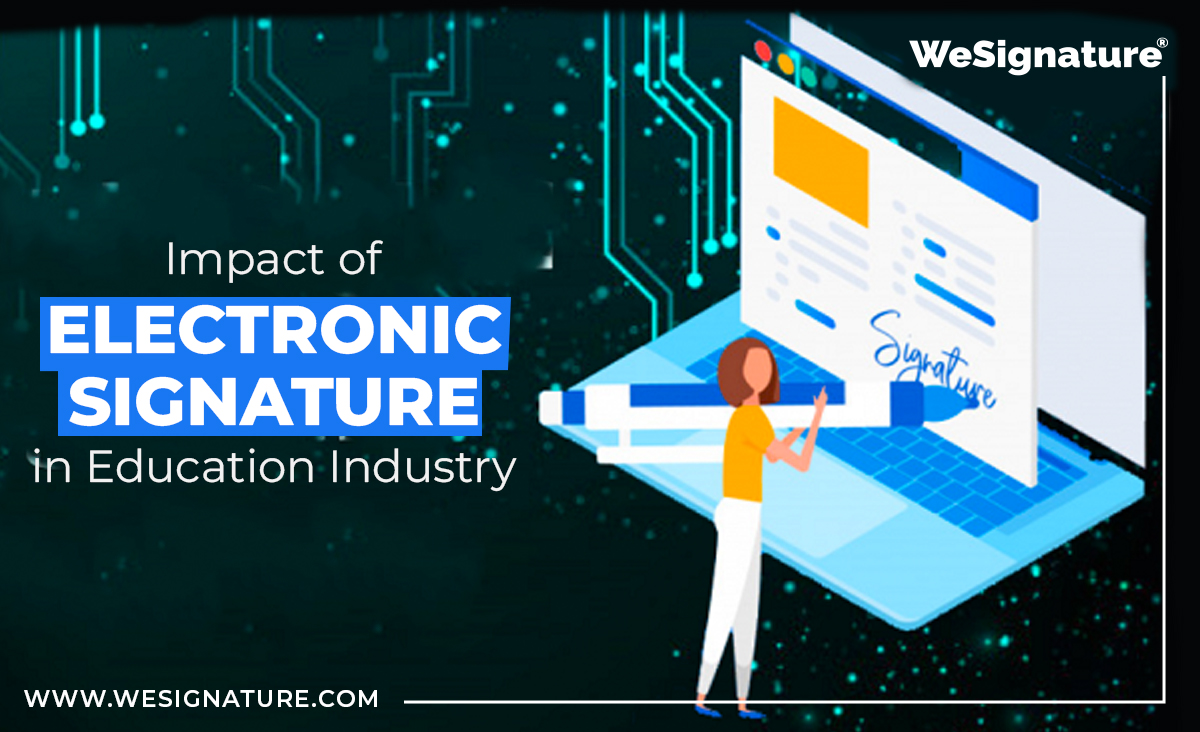The education sector is on the brink of significant reform in response to the rapid digital advancements of today. The modern era is the era of the neural core, which grows due to the wave of technology innovations, which are introduced to enhance the security, among others. In this series of innovations, digital signature plays an important role and influences transformations of administrative activities and documentation procedures in educational institutions. From admission applications to academic papers, electronic signatures offer myriad advantages, expediting workflows while guaranteeing compliance and security.
This approach scrutinizes the electronic signature as a prospective tool for modern educational practices.
1. Simplified Admissions Processes
E-signatures help conduct the paperless admission process so that students can sign acceptance letters, registration forms or any other document but one cannot cheat on those as their signature history is visible. This does away with the use of physical paperwork, minimizes administrative costs while at the same time hastens registration.
2. Improve Accessibility
Through the means of electronic signatures, educational institutions can allow remote access to papers and, thus students, teachers and administrators are able/are allowed to conduct remotely via any device connected with the internet. This ease makes one accessible and thus brings convenience in document management operations.
3. Profitability
The benefits of e-signatures involve the reduction in money spent on printing, papering and shipping that are primarily involved with document signing; traditional processes save a lot for long time educational establishments toward this end.
Further, e-signature solutions are available with highly affordable pricing plans such as free for basic usage.
4. Improve efficiency
Electronic signatures improve document approval and workflow management by reducing the delays caused by manual signing, which frequently leads to unavoidable errors. This increased efficiency enables faster document processing, ensuring that decisions are made quickly and tasks are completed on time.
5. Manage Documents Securely
Electronic signature platforms use advanced encryption and authentication methods to ensure that signed documents are secure and reliable. Furthermore, organizations can follow regulatory guidelines and protect their data from unauthorized access or tampering.
6. Legal validity
Electronic signatures are legally accepted in many parts of the world with a level of validity and enforceability equal to traditional handwritten ones. This legal recognition enables the educational institutions to trade electronically and enter into agreements with an ease in court.
7. Environmental sustainability
In the educational industry, electronic signatures go hand-in-hand with environmental sustainability campaigns because they help to reduce paper consumption and encourage use of green practices.
Such transfer to digital document management by virtue of reducing the environmental carbon footprint, which is associated with its traditional paper-based processes.
8. Seamless integration
E-signature solutions allow for uninterrupted system functionality, including interaction with other educational software programs like learning management platforms and student information systems. This interoperability automatically simplifies data exchange without compromising on any of the administrative procedures.
9. Compliance with regulatory requirements
Various regulatory standards and industry-specific requirements regarding document management and data protection should be followed by educational institutions. Thus, the compliance characteristics of electronic signature are audit trails and document archiving which helps to implement these regulatory duties with more efficiency.
10. Rapid financing of financial support
Students can electronically sign financial aid forms, loan agreements, and scholarship papers through electronic signature hence making the processing of funds easier. This speeds up the access to vital funds and resources for needy students.
11. Improve collaboration
E-signature platforms enable collaborative document review and approval among groups, allowing students, staff members, teachers, administrators, and external parties such as parents to work together dynamically in decision-making processes. Real-time notifications and status updates provide visibility into the signing process, leading to transparency as well as accountability.
12. Supporting distance learning
With the rise of modern distance and blended learning approaches, electronic signatures play a crucial role in streamlining communication between teachers and students. They enable swift document transfer, particularly beneficial in virtual classrooms where assignments can be submitted and assessed by various participants. Virtual classroom instructors leverage e-signature capabilities for tasks such as assessments and course agreements, requiring students’ signatures. Companies like WeSignature provide seamless solutions, consolidating these functions onto a single technology platform, simplifying implementation without complexity.
13. Time-Saving Convenience
Students and teachers can also sign documents electronically on any available device – a computer, tablet or smartphone without the need to be physically present. It brings time-saving convenience and helps in increasing productivity by cutting down the other hand administrative burdens.
14. Secure Document Archiving
E-signature platforms offer innovative archiving functionality which enables secure storage of signed documents in digital depositories. Organizations can retrieve archived records as and when required for holding compliance audits, legal consultation or historical analysis.
15. Improve Data Privacy
E-signature solutions prioritize data privacy and information confidentiality. These solutions use industry-leading security measures to protect personal data effectively. Organizations can provide stakeholders a guarantee that their data is protected from illegitimate access or leakage.
16. Brand Reputation Management
To be more innovative, efficient and customer-oriented there educational institutions should adopt modern electronic signature technologies. The good digital experience improves the institution’s brand image and creates trust among students, parents, and partners.
17. Competitive Advantage
E-signatures become a competitive advantage of institutions in a fiercely competitive global education landscape where they lead in the adoption of new technologies. This benefit, rather than only attracting potential students, also places the institution as the front runner in innovative education.
To conclude
electronic signatures are essential for transforming administrative procedures and advancing security and efficiency in the education system. Electronic signatures offer numerous advantages, including assisting institutions in adapting to technology and meeting the needs of current or prospective students. E-signature solutions allow educational organizations to effectively automate processes and deal with related risks in contemporary digital world.
Read More




